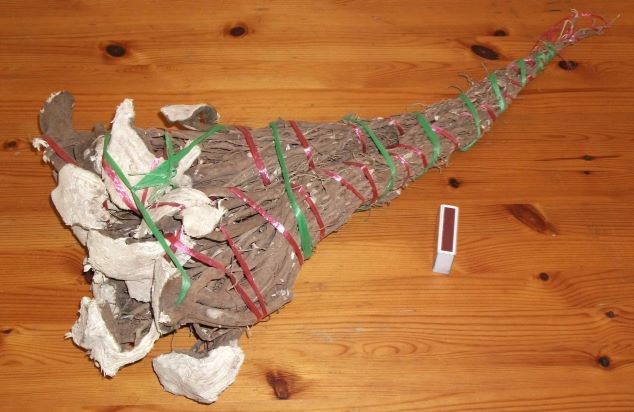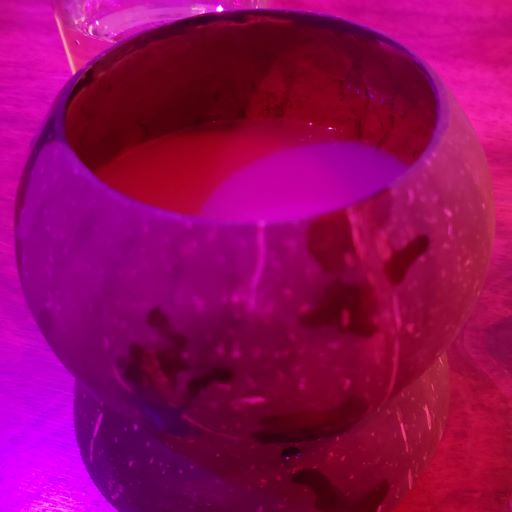“The ice-cold kava was poured into hollowed out coconut shells, with a generous serving to each patron at the mellow establishment. ‘Ready?’ asked the server behind the counter. With a wily smile, the server opened his hands wide. Everyone joined in with a simultaneous clap and shouted BULA! (cheers to life) and knocked back a round of the earthy, root-water. Friendly banter resumed after the tacit giggles from the taste of the beverage wore off and the server returned to prepare the next round.”
– Scene from a local kava bar
What’s the Story?
What Is Kava?
Most known in the United States as kava, it also goes by the names kava-kava and ‘awa. It’s a member of the pepper family and has been cultivated among the Pacific Islands, such as Vanuatu, for centuries. There, it has long been used as both a ceremonial and medicinal plant.
In recent decades, kava has become popular as a social and therapeutic product often used in branches of herbal and alternative medicine in western culture. The plant contains active ingredients unique to kava called kavalactones.
Will It Work for You?
Getting Started with the Kava Root
Interested in investigating and ingesting some kava for yourself? Just like learning about any new topic, start at the root. Quite literally, the roots are ground into powder, mixed with water or other flavored beverages, and filtered to remove the fiber. Drink the filtered liquid to induce its effects. This method is particularly popular among social users and the prevalence of “kava bars” has increased in recent years. These neighborhood establishments provide patrons with a social scene and an alternative to alcohol bars. Alternatively, pre-dosed tablets and capsules are readily available for consumers.

What Does Kava Do?
Kava is said to have a positive effect on anxiety and nervousness. This makes sense considering those who consume it report having increased sociability, a pleasant mood, and relaxation. Intoxication, altered consciousness, and abnormal behavior are not part of the kava experience. Additionally, it is said to have some effect as a mild pain reliever and sleep aid. Recent studies suggest it may also have a role in cancer prevention.
As with many other herbal and natural products, the strength of the product varies depending on the brand. For this reason, I recommend that when trying kava for the first time you start low and go slow until you know how it affects you. The traditional drink has the notable effect of gently numbing the lips and mouth. It is also reported to have a diuretic effect, meaning drinking kava may make you need to urinate.
Kava Reverse Tolerance
People who often drink kava talk about a “reverse tolerance” effect. They say that the more often you drink kava, the less you will need to feel its effect. I do not doubt of all the kava fans. However, my promise is to deliver accurate, science information to anyone who wants it. Therefore, you should know that there are currently no scientific studies that explain or prove this effect.
Is Kava Safe?
Side effects may depend on the dose taken, how long it has been used, and can include: nausea, headaches, skin rash, and fatigue. If any of these side effects happen, simply stop using kava. Although it is generally recognized as safe in typical doses by the world health organization (WHO), I don’t recommend it for use in people with liver disease or injury. There have been some reports that doing this might be unhealthy, particularly for non-natural versions like extracts, capsules, and tablets.
Dosing Guidance
| Purpose | Low Dose (mg) | High Dose (mg) |
|---|---|---|
| Relaxation | 20 | 300 |
| Mood Restoration | 60 | 250 |
| Sleep Support | 200 | – |
| Traditional Cultural Practice | 750 | 8000 |
Sources and Resources
Where Can I Find Kava?
My primary recommendation is to check and see if your area has a local kava bar. It is a great place to try out kava in an enjoyable environment. Many of these establishments are culturally connected with the plant and can give a historical perspective on its use that makes each visit a unique experience.
Looking to try it out in a more secluded setting? Check out my review of two amazing kava products. You can order some from an online retailer if it’s available in your area. Some products are pre-dosed while others, like kava powder or roots, may come with suggestions on how to prepare and consume them.
Final Thoughts
Kava is an incredible plant with medicinal properties that modern science has just started to understand. Because of that I hope we can continue to study this root. The more data we have, the more people we can help.
If you enjoyed reading about this relaxing root, maybe you would enjoy reading about other medicinal plants. Check out these articles about pain-fighting plants: kratom and turmeric.
Talk Nerdy to Me (Details for Professionals and Curious Minds)
Pharmacology
The primary active ingredients of the kava plant, Piper methysticum, kavalactones, come in 6 common active forms which purport a range of pharmacologic activity and efficacy. This spectrum is in part due to the wide variation of strains at over 150 different sub-types. It has been estimated that the kava root contains 20 – 50% kavalactones by weight while extracts contain as much as 96%.
While there is no standard dosing protocol for kava and various indications for use, estimates of total daily ingestion for typical traditional use ranges from 750 to 8000 mg of kavalactone equivalent per day.
Efficacy
In terms of efficacy, this is one of the few natural/alternative products with a robust degree of literature supporting its use and outcomes. Animal and human studies have shown inhibition of edema and inflammation by various mechanisms including down-regulation of TNF (tumor necrosis factor) alpha production, IL (interlukin), and LPS (lipopolysaccharide) mediated inflammation pathways.
Studies have noted neurologic effects mediated through AchE (acetylcholinesterace) [animal data only] and mild inhibition of MAO (monoamine oxidases) as well as NMDA (N-methyl-D-aspartate) receptor activation. However, much data speculates about the interaction between kava and the GABA (gamma-aminobutyric acid) receptor pathway on a separate site of action from benzodiazepines and ethanol. These findings may explain its clinical impact on anxiety reduction and sleep facilitation with the benefit of an improved dependency, intoxication, and toxicity profile. Moreover, several clinical studies indicate the plant does not yield significant physiologic dependence. In fact, kava has been used as adjunct therapy in modern substance abuse treatment programs with successful results.
Kava has also been implicated in cancer risk reduction as some of its constituents have exhibited anti-carcinogenic properties. Preliminary data are positive for tumorgenesis inhibition of carcinoma and various solid tumor cancers. Mechanisms proposed are variable and remain under investigation. However, antiproliferative effects are postulated. These may stem from regulation of gene expression and tumor cell apoptosis.
Safety
When it comes to toxicity, studies indicate hepatotoxicity is the primary area of concern. Water-based kava root drinks are generally recognized as safe by the WHO and pharmaceutical preparations have accounted for the majority of toxicity case reports. While various mechanisms are plausible, the likelihood of toxicity appears to be linked to the higher concentrations of active compounds, namely kavalactones, flavokavains, and alkaloids which are not observed with such abundance within the plant’s naturally occurring roots and are further diluted upon consumption.
Recent toxicity estimates place the incidence ratio at approximately 1: 60-125 million per patient for extract preparations and often involve co-ingestion of known hepatotoxic substances. An animal study on toxicology conducted over 2 years found that no significant changes were observed in rats exposed to kava extract formulations at 0.3 g/kg and lower. No large-scale human toxicity studies currently exist, however for perspective, this quantity would be the equivalent of ingesting almost 20,000 mg per day of purified kava extract in an average sized adult human. Other adverse effects are generally mild and self-limiting, with resolution upon cessation of use.
Although anecdotal hypotheses abound, further research is needed to provide reliable ADME (absorption, distribution, metabolism, and elimination) and pharmacokinetic data. Including on the purported sensitization that occurs via reverse tolerance.
References
- Bian T, Corral P, Wang Y, et al. Kava as a Clinical Nutrient: Promises and Challenges. Nutrients. 2020;12(10):3044. Published 2020 Oct 5. doi:10.3390/nu12103044
- Wang J, Qu W, Bittenbender HC, Li QX. Kavalactone content and chemotype of kava beverages prepared from roots and rhizomes of Isa and Mahakea varieties and extraction efficiency of kavalactones using different solvents. J Food Sci Technol. 2015;52(2):1164-1169. doi:10.1007/s13197-013-1047-2
- Aporosa SA. Decolonising quantitative methods within a Pacific research space to explore cognitive effects following kava use. Journal of Interdisciplinary Research. 2021;5(1):74-92. doi:10.26021/10642
For additional information or questions, please don’t hesitate to contact us.


Pingback: What Is Kratom, Is Kratom Safe? - Everything You Need to Know
Pingback: Buying the Best Kava: Product Review - Pharm @ Table
Pingback: Know Your Roots: the Health Benefits of Turmeric - Pharm @ Table